
Five-Hundred-Year-Journey
Alexander Poltorak Abstract This essay addresses the anigmatic statement of the Jewish Sages, stating that G-d created this world with the letter Heh and the

Alexander Poltorak Abstract This essay addresses the anigmatic statement of the Jewish Sages, stating that G-d created this world with the letter Heh and the
By Alexander Poltorak Abstract The Torah portion of Shemini records the climactic eighth day of the Tabernacle’s dedication, the moment when divine fire finally descends.

By Alexander Poltorak And there I will meet with you, and I will speak with you from above the cover, from between the two cherubim
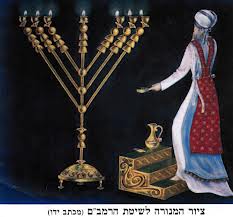
The Temple Menorah served as a lighthouse, illuminating darkness and providing purpose and direction.
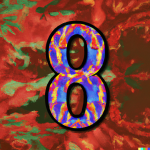
And on the eighth day, the flesh of his foreskin shall be circumcised. Leviticus 12:3 In the Torah portion of Tazria, we are commanded to
The current Torah portion Beshalach tells about the splitting of the Sea of Reeds. As I discussed in my essay, “Collapse and Revelation,” the splitting
Introduction Most Americans believe in an immortal soul.[1] Most scientists think the soul does not exist. Why do so many people believe in an immortal

And G‑d created man in His own image, in the image of G‑d created He him; male and female created He them. And G‑d blessed
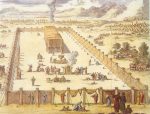
We are quite familiar with space—we move freely in space back and forth; we concur space on land and beyond; we reclaim land from sea;

A light shalt thou make to the ark…with lower, second, and third stories shalt thou make it. (Genesis 6:16) We mentioned in the previous posts
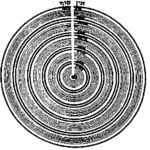
Sweeping Infinities Under the Rug—or Renormalization Having dealt with internal contradictions in the previous section (see Physics of Tzimtzum I — The Quantum Leap and

Introduction “In the beginning G‑d created the heavens and the earth.” (Genesis 1:1) “In the beginning G‑d created the heavens and the earth,” the Torah

In the beginning G‑d created the heaven and the earth. (Genesis 1:1) The first verse in the Torah is key to understanding the fundamentals

And the Eternal G‑d said: “It is not good that the man should be alone; I will make him a helpmate opposite him.” (Genesis 2:18)

Jews have a very strange custom to take four species (Heb. arba’a minim)—a fruit of a citron tree (etrog), a branch of a date palm (lulav), boughs from the myrtle tree (chadassim),

Meditations on the Maaseh Merkavah – II This post is a sequel to my previous post, “Space – Between Future and Past.” For background information,
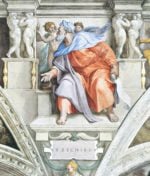
Meditations on the Maaseh Merkavah – I We do science by studying nature. We study physics in a lab, peering into space or working out
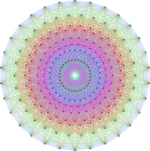
The Special Theory of Relativity, published by Albert Einstein in 1905, was a game changer. It ushered the era of new physics dubbed by some

In a Kabbalistic meditation on lighting Chanukah Menorah, the Arizal links the menorah lights with a supernal river (see Candle on the River). The Arizal’s
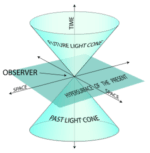
And the life of Sarah was one hundred years and twenty years and seven years… (Gen. 23:1) Why did Esther merit to rule over 127
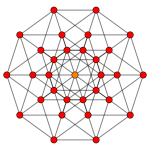
In my last post, Tisha B’Av on Shabbat – A Relativistic Perspective, I wrote that G‑d created His sanctuary in four dimensions — Bet HaMikdash

Yesterday was the 9th day of the month of Av or, in Hebrew, Tisha B’Av. Usually, Tisha B’Av is marked by mourning and fasting. Yesterday,

Continuing the theme of my last post, Mishkan – a Metaphor for Quantum Reality, the analogy between the Tabernacle (“Mishkan”) and quantum reality goes even
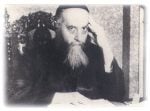
Today, Yud Shvat, is the yartzeit (anniversary of passing) of the sixth Lubavitcher Rebbe, Rabbi Yosef Yitzchak Schneersohn, a.k.a. the Rebbe Rayatz, or the Frierdiker

בְּרֵאשִׁית בָּרָא Genesis 1:1 The Torah starts with two words—Bereshit bara—“In the beginning, G‑d created…” (or, as Rashi translates it, “At the beginning of creation
In the Torah portion Emor (Leviticus 21:1–24:23), we are instructed to abstain from work every seventh day on Shabbat. Next week’s Torah portion, Behar, continues

The mezuzah is one of the few miẓvot ([divine] “commandments”) for which the Torah states its reward. In this case, the reward is a long
Speak unto Aaron, and say unto him: “When thou lightest the lamps, the seven lamps shall give light in front of the menorah.” (Num. 8:1)
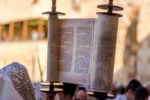
Passover has ended. All Jews hastily return their Passover dishes to storage in special cabinets or the attic until the next Passover. After an eight-day
Ye shall be holy, for I, the Lord, your G‑d, am holy. Leviticus 19:2 This Torah portion begins with an astonishing statement: Speak unto all

Give me the Machpelah (double) Cave Genesis 23:9 The first legal acquisition of land in Israel takes place in this Torah portion, Chayei Sarah, when Abraham
This Rosh HaShanah I had the strangest dream. I dreamed that I was giving a lecture in cosmology at a university when I suddenly realized

Speak to the children of Israel and have them take for you a perfectly red unblemished cow, upon which no yoke was laid… The cow